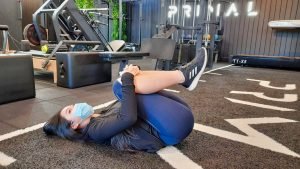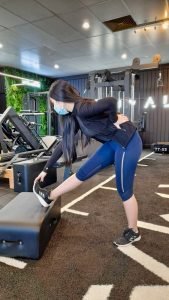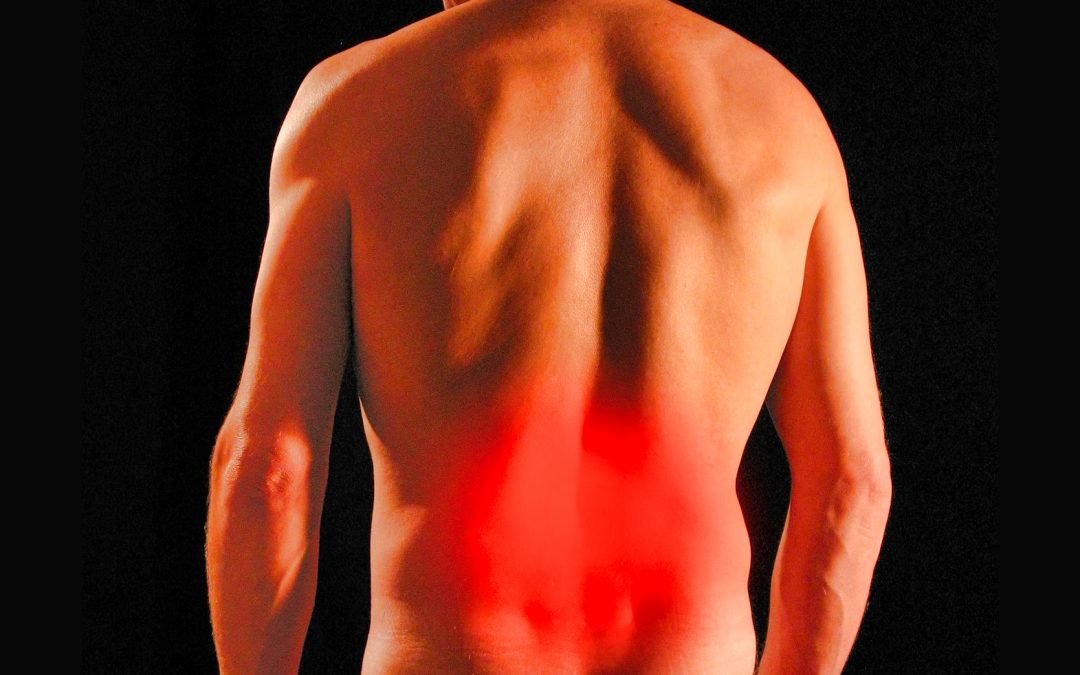What is the Sciatic Nerve?
A sciatic nerve injury can be so painful and debilitating that you don’t want to leave the couch. Sciatica can be caused by a ruptured disk, spinal stenosis (narrowing of the spine canal), and injury.
Sciatica is not an actual condition, but a very uncomfortable symptom of the back, hip, or pelvic issues.
Fortunately, stretching can relieve the pain of sciatica for most people. Today we will show you our 5 best stretches with pictures to help manage that pain and eventually help you being pain-free.
For the best and most correct stretches personalised to your body type it’s best to seek a Physiotherapist. The stretches provided will help relieve pain and strengthen core areas to take the stress off the main areas that cause your sciatic pain.
Areas that you may feel sciatic pain
People who suffer from sciatica usually experience leg pain that runs through the buttocks. However, it is not exclusively caused by back problems. It can also result from pelvic or hip injuries, or directly from direct pressure on the sciatic nerve.
There can be mild pain or so much pain that a sciatica sufferer finds it difficult to stand, sit, or even sleep. The pain of sciatica can be described as sharp, shooting, or burning. Symptoms of weakness may occur in the affected leg. Sudden movements like coughing can aggravate the pain.
What Causes Sciatic Pain?
Depending on what is causing the pain, an individual’s sciatica treatment will be different.
Sciatica can be caused by a number of things, including:
- The herniated disc or one of the cushions between the vertebrae slips out of place
- Degenerative disk disease, or degenerative disc disease, leads to bone loss in the spinal column
- Pregnancy
- Lumbar spinal stenosis is a narrowing of the spinal cord putting pressure on the lumbar spine
- Back injuries that put too much pressure on the sciatic nerve
There are a number of benefits to targeted sciatica exercises:
- Relieves acute sciatic pain
- Enhance the range of motion and mobility of your legs
- Accelerate the healing process of soft tissues
- Strengthen and condition muscles and soft tissues
Completing prescribed exercise that is planned and structured will help improve overall fitness.
- Strengthening of muscles.
- Healthier bones. Bone density increases with exercise, resulting in stronger bones.
- Increased blood flow. During exercise, blood flow is increased to the spine’s muscles, nerves, and soft tissues.
- Healthy spinal discs. Between each spinal vertebrae are spinal discs that exchange fluid to receive nutrition and keep healthy.
- Sciatica is less stiff after treatment. Nerve mobilization exercises, stiff sciatic nerves can be improved.
Stretches for Sciatica Pain Relief
It’s important to keep doing the exercise while avoiding getting hurt, especially your leg. If you ever feel increased leg pain as we’re going through these exercises you should stop and move to the next until it’s not painful to perform again.
1.Knees to chest
- Take the affected side or the spot of the leg we’re going to bring the knee up at 90 degrees
- Take your hands and place them behind the knee
- This stretch should already start to activate into the lower back the back of the leg and into the glutes.
- only to your comfort level hold this for about 10 seconds. Relax do it a couple of times just to loosen everything up.

Knees to Chest Stretch to help with Sciatic Pain
2. The Cobra
- Start by laying down with your hips and pelvis lay flat
- press up on the upper body to try to form a c-shaped curve in the lower back
- hold it for 15 to 30 seconds while relaxing and then doing it three to five times

Cobra Stretch to help handle Sciatic Pain
3.The Full Cobra (working into a deeper stretch)
- While laying down in the same position
- Start pressing down and extending your arms and making them straight while trying to keep your hips and pelvis flat.
- Hold for 15-30 seconds hold and doing it up to 5 times.

Full Cobra Stretch to help with Sciatic Pain
4.Standing Hamstring stretch
- Stand with the leg that you feel the pain and place it in front of the Other
- Bend the back knee and rest your weight on the bent knee
- Tilt the hips forward as if sticking your buttocks in the air and hold this – 20 to 30 seconds

Standing Hamstring Strech to help with Sciatic Pain
5. Seated spinal twist
- Have your legs out in front of you,
- Take one leg, bringing it up and over the other leg. You can use your back arm as support.
- Raise your arm up to cross over the body, and you can hook that elbow,
- Bring the knee even over the body midline,
- Aim to twist your spine slowly and gently so you can look over the back shoulder
- hold it for 30 seconds up to a minute and release.
Foods that help with Sciatic Pain
Pineapple
The enzyme bromelain found in pineapples is anti-inflammatory. Enzymes from pineapples are also used to treat rheumatoid arthritis and promote tissue repair.

Pineapples are great for anti-inflammatory that will help with Sciatic Pain
Omega-3 fatty acids
Omega-3 fatty acids can reduce the number of inflammatory molecules and substances which is great for the overall body. Anti-inflammatory foods like fish, oysters, chia seeds, walnuts, and flax seeds can help reduce inflammation.
B-Vitamins
Green peas, spinach, navy beans, nuts, and bananas are high in B-vitamins, which are extremely important to sufferers of sciatic nerve pain

Healthy diet of B Vitamins and Omega 3 help with Inflammation like Sciatic Pain
Looking for a Physiotherapist to help with your Sciatica?
Primal Physiotherapy is a physiotherapy sports clinic. Our goal is to reduce nerve pressure caused by poorly moving spinal joints as well as to ease muscular tension in the legs, buttocks, and lower spine. These can be achieved through a combination of spinal mobilisations, trigger point therapy, and massages.
Book in to see a physiotherapist today here:
Website: https://primalphysiotherapy.com.au/

Primal Physiotherapy

